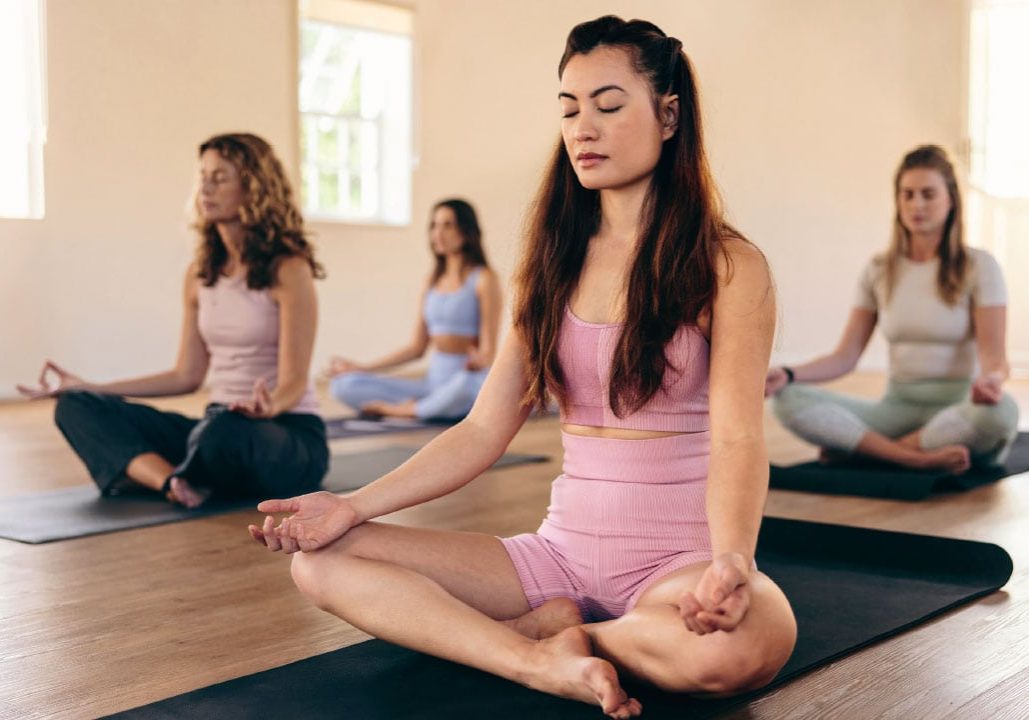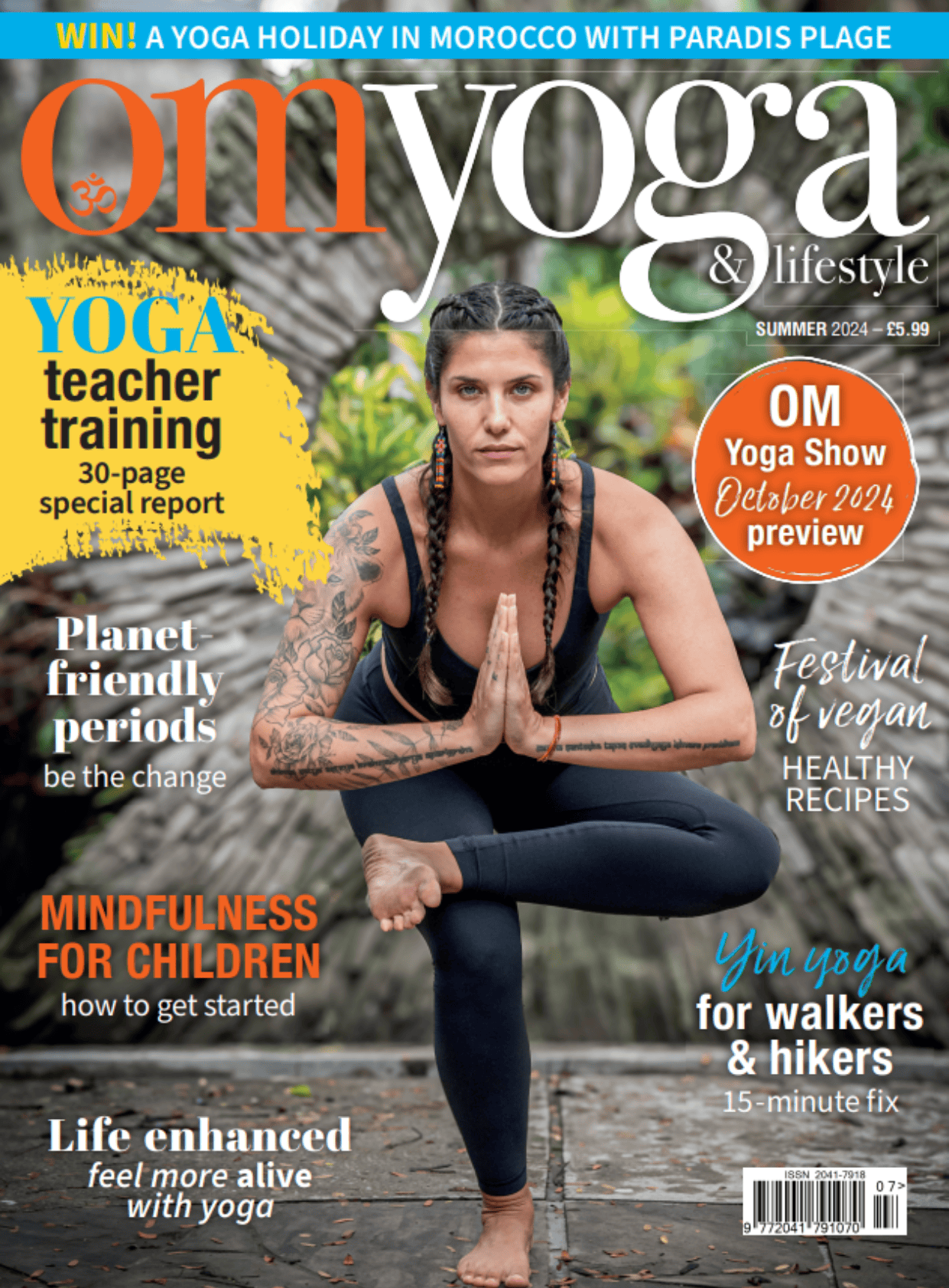
Harmony in Motion
The essential role of tempo and timing in yoga classes. By Sandy Raper
Reading time: 4 minutes
It's common to give way to the hustle and bustle of life, with even our yoga practice becoming just another task to rush through before moving on to the next thing on our agenda. Yet, when it comes to guiding a truly impactful yoga class, the tempo and rhythm set by the teacher can significantly shape the experience for students, fostering a meaningful and transformative journey. It's not about rushing through the sequence; rather, it's about providing students with a space to connect with themselves and fully embrace the present moment.
This crucial element holds significant power and is an essential component in developing the skillset required to become an effective and impactful yoga teacher. Let’s dive into three areas to better understand the responsibility and role tempo and timing play in yoga classes.
PRIORITY OF SAFETY
Refining and accentuating the skill of upholding a tempo that ensures students’ safety and provides them with ample opportunity to fully immerse themselves in each posture is worth placing at the top of your list.
This entails delivering clear and succinct guidance while also allowing room for students to breathe, manoeuvre and delve into the intricacies of each pose. Particularly within the vinyasa flow-style practice of asana, there exists a discernible rhythm wherein movement and breath synchronise, offering practitioners a sense of unwavering concentration, mindfulness and access to the flow state.
By hurrying, we overlook the depth of the practice. Rather than rushing to the next posture, urge students to relish each moment, to observe and sense the sensations in their bodies, and to move deliberately and mindfully.
In the serene and sacred space of a yoga class, the tempo, rhythm and pace establish the foundation for a deep inner exploration. It's not merely about swiftly transitioning through postures; it's about cultivating an atmosphere where mindfulness can thrive, and each movement evolves into a meditation in motion. This mindful perspective fosters the cultivation of a new way of existence that shifts away from busyness and productivity and towards a reverence for the present moment.
ESTABLISH PRESENCE OVER RUSH
How do you establish the right pace in a yoga class? As a teacher, part of your role and responsibility is found within setting the intention that cultivates an atmosphere of mindfulness and awareness. The pace at which you cue and instruct the class sequence has a significant impact on whether or not this atmosphere is created.
Imagine a yoga class where every movement feels rushed, every transition abrupt. Possibly the pace was so fast that you couldn't even land in some of the poses being offered and instructed. It's unsettling, isn't it? That's why setting the right pace is crucial.
Instead of focusing on getting through the prepared sequence, the pace should be steady and deliberate, allowing students to be seen and provided time to explore each posture fully. This deliberate pace cultivates a sense of presence, inviting students to connect deeply with their breath and body. The flow state of being is elevated when the tempo and rhythm of the class are established and a well-paced class can stand on its own.
When a steady tempo is not maintained in the practice space, and the pace becomes so fast that students don't have the time and space to settle into the postures, frustration may set in, and a desire to rush through the experience emerges instead of experiencing the rhythmic flow state that a well-paced class can provide.
Encourage students to let go of the need to ‘get through’ the practice and instead focus on being present with each breath and movement. This requires teachers to dedicate themselves to being present for the class experience rather than solely focusing on the cognitive aspects of teaching, such as recalling the prepared sequence.
CONNECTION AND ENGAGEMENT
A well-paced yoga class is essential for fostering connection and engagement among students. Setting the right tempo provides students with the opportunity to fully immerse themselves in the practice, connecting mind, body and breath. Rushing through sequences or transitions can disrupt this connection, hindering students' ability to explore each posture skilfully and safely.
When set effectively, tempo communicates that maintaining a consistent pace throughout the class fosters an environment where students can deepen their practice by sharpening their awareness of sensations within each posture and transition.
Students have the time and space to connect with their bodies on a deeper level while remaining attentive to explore their challenges and edges safely. This allows for a more profound experience on the mat, facilitating growth and self-awareness.
Additionally, a well-paced class promotes engagement not only with oneself but also with the teacher and fellow practitioners. A sense of community is fostered and supported as students move through the practice together, synchronising breath and movement. This collective energy enhances the overall experience, creating a shared sense of presence and connection within the class.
Lastly, mindful movement in yoga isn't just about going through the motions; it's about cultivating one-pointed awareness – a laser-like focus on the present moment. When students move with intention and attention, they can fully experience the depth and beauty of each posture, awakening a sense of inner peace and tranquility.
SPACE IN-BETWEEN
As a teacher, simplifying your approach to sequencing and infusing ‘space in[1]between’ the postures will support you in this area. By establishing a steady pace during transitions, you create a sense of flow and continuity throughout the practice. A teacher seeks to become a good facilitator of flow.
Just as music has its rhythm and tempo, so does a yoga class. The rhythm guides the flow of movement, while the tempo determines its speed. When these elements are harmonised, students can effortlessly move from one posture to the next, creating a seamless flow of energy throughout the class.
As yoga teachers, we greatly contribute to co-creating experiences for students by setting the right pace, rhythm and tempo. This allows us to lead and guide students on a journey of self-discovery and inner exploration.
Remember that mindful movement isn't just about what happens on the mat; it's about how we move through life – with presence, intention and grace.
The next time you step onto your mat or into the role of a teacher, remember: What's the rush? Slow down, breathe and embrace the journey one breath at a time.
Sandy Raper is a yoga teacher, podcast host and author. Want to hear more? Check out the Beyond Yoga Teacher Training Podcast where you'll find Sandy Raper expanding conversation on this topic and more. Find out more at: sandyraper.com


